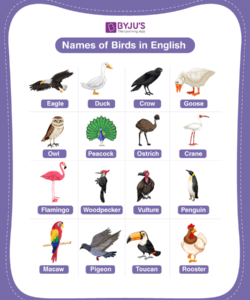Japan, an archipelago nation in East Asia, has a rich and diverse culture that finds expression in various art forms, including its language. The Japanese language has a deep affinity with nature, and this is reflected in the charming names given to its avian inhabitants.
The following article delves into some of the most captivating “japanese bird names and meanings”, providing insights into their significance and the beauty of the Japanese language.
Some Common Japanese Bird Names and Their Meanings
Hibari (Skylark): Hibari is the Japanese name for the skylark, a small bird known for its melodious song. The name “hibari” means “soaring” and reflects the bird’s habit of singing while flying high in the sky.
Uguisu (Japanese Bush Warbler): Uguisu is a small, greenish-brown bird that is renowned for its beautiful song. The name “uguisu” is derived from the sound of its cheerful call, which is a common sound in Japanese gardens and parks.
Tsuru (Japanese Crane): Tsuru is the Japanese name for the crane, a large, long-necked bird that is considered a symbol of longevity and good luck in Japan. The name “tsuru” is thought to be derived from the bird’s distinctive call.
Karasu (Crow): Karasu is the Japanese word for the crow, a black bird that is often associated with bad luck or death in Japanese folklore. The name “karasu” is derived from the sound of the bird’s call.
Japanese Bird Names and Cultural Significance
Houou (Phoenix): Houou is the Japanese name for the phoenix, a mythical bird that is often depicted in Japanese art and literature. The name “houou” is derived from the Chinese word “fenghuang” and represents a symbol of peace and prosperity.
Kamome (Seagull): Kamome is the Japanese word for the seagull, a bird that is often seen flying along the coast of Japan. The name “kamome” is derived from the sound of the bird’s call and represents a symbol of freedom and coastal life.
Sakurajima Chouu (Sakurajima Thrush): Sakurajima Chouu is the Japanese name for the Sakurajima thrush, a small bird that is endemic to the Sakurajima volcano in Kagoshima Prefecture. The name “Sakurajima Chouu” reflects the bird’s habitat and represents a symbol of the region’s natural beauty.
Yama Semi (Japanese Bush Warbler): Yama Semi is another Japanese name for the Japanese bush warbler, a small bird that is known for its beautiful song. The name “yama semi” means “mountain insect” and reflects the bird’s habitat and diet.
Akai Ringo (Red-billed Leiothrix): Akai Ringo is the Japanese name for the red-billed leiothrix, a small, brightly colored bird that is native to Japan. The name “akai ringo” means “red apple” and reflects the bird’s distinctive red beak.
Conclusion
“japanese bird names and meanings” are a fascinating aspect of Japanese culture, reflecting the deep connection between the Japanese people and the natural world. The names not only identify the birds but also convey cultural significance and aesthetic beauty. By exploring these names, we gain a glimpse into the rich tapestry of Japanese language and culture.
So, the next time you encounter a bird in Japan, take a moment to appreciate its enchanting name and the cultural significance it holds. From the soaring skylark to the graceful crane, each bird’s name tells a story that connects us to the beauty and diversity of the Japanese natural world.
FAQ
What is the Japanese word for “sparrow”?
Suzume
What is the Japanese name for the “great tit”?
Shijukara
What is the Japanese word for “eagle”?
Washi
What is the Japanese name for the “owl”?
Fukurou
What is the Japanese word for “hawk”?
Taka



